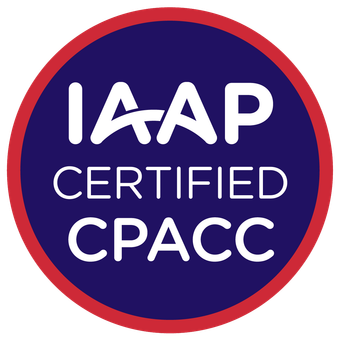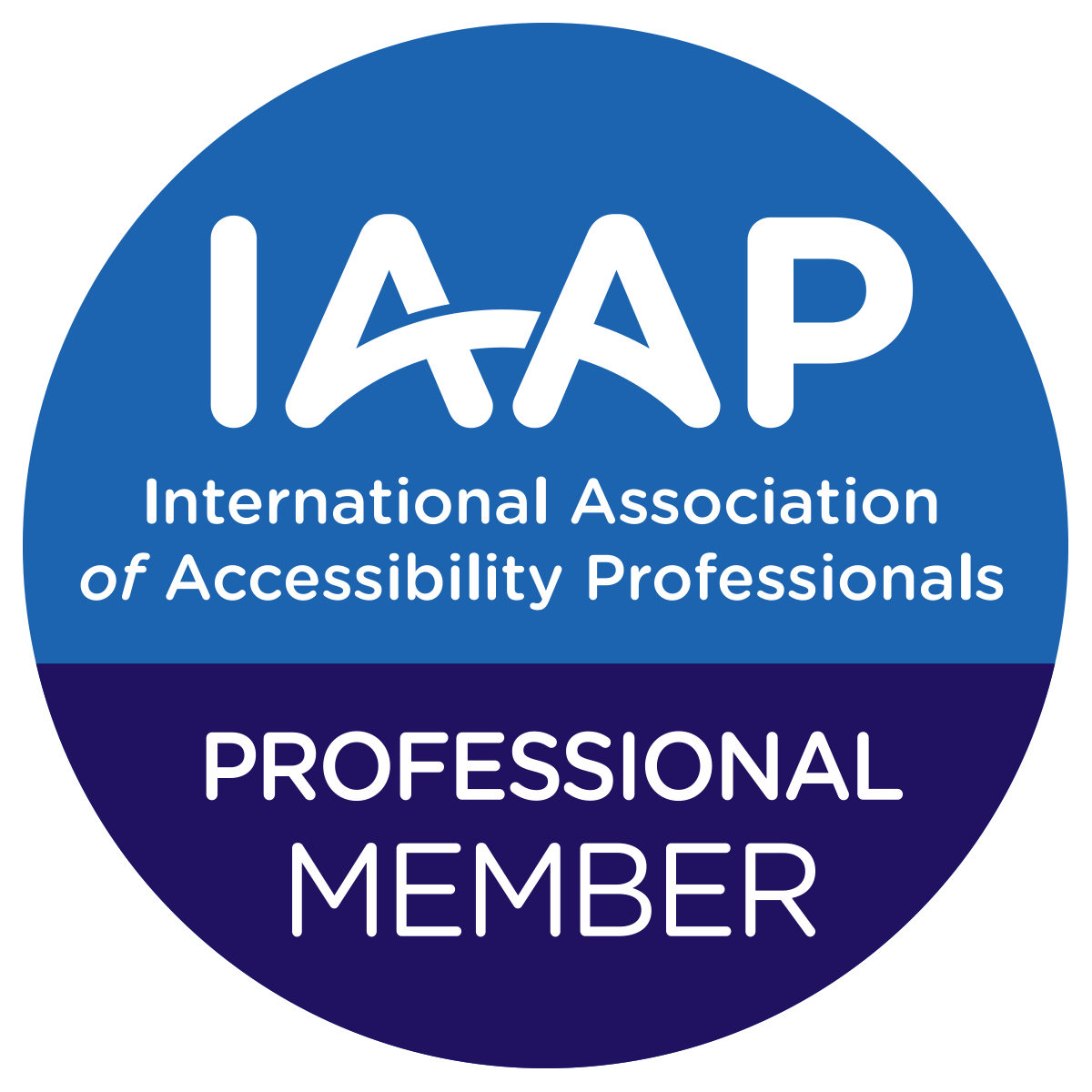Before we dive into website accessibility in the UK, let’s uncover the fact that an average person in London spends around 3.5 hours daily accessing the internet. It’s truly an eye-opening and genuine fact emphasised by the National Statistics UK.
Everything we do, from online shopping to banking, we rely on the internet. For business owners, it has become inevitable to run their enterprise without a website. We should also understand that disability affects 1 in 5 in the UK. So, why can’t we make a website which is inclusive and welcoming for all users? That’s where website accessibility comes into action. So, what’s website accessibility really?
Together, we can learn more about website accessibility in the UK.
Table of Contents
What is Website Accessibility really?
Website accessibility or Web Content Accessibility Guidelines (WCAG) came into existence in 2008. There were several amendments, and currently, the WCAG 2.2 guidelines became the gold standard in May 2023. WCAG now sets the standards for international and web accessibility in the UK. The three success criteria standard levels for accessibility are A, AA and AAA.
- A – Minimal level of accessibility
- AA – Minimum standard for a business to strive for
- AAA – Highest level of accessibility
If reading about manual accessibility audits excites you more, you can catch up with our most recent blog post.
“1 in 4 differently-abled adults in the UK have never used the internet in their lives.”
Have you gone through the above piece of information? It says that one in four people with disabilities (PwDs) have never used the internet. What could be the reason behind this?
I’ve outlined the main reasons why disabled adults don’t use the internet here:
- High cost of hardware, software and broadband connection
- Lack of skills or training and development
- Requires assistive technologies
Even after disabled individuals get access to online, over 70% of sites in the UK are inaccessible. Let’s check out the reason.
- Poor or missing alt text descriptions for images
- Colour contrasts which are difficult to understand
- Inability to find the information they’re looking for
Website Accessibility in the UK
Although accessible websites should be the goal of any enterprise, public sector websites in the UK are subject to additional scrutiny due to a legal provision. Organisations in the public sector include the federal, state, and municipal governments, specific nonprofits and other non-governmental organisations.
WCAG Level AA became obligatory for public sector websites as of September 23, 2018, when the 2018 Public Sector Bodies (websites and mobile applications) accessibility requirements went into effect.
Web pages and mobile applications must comply with the following four requirements under this law:
- Perceivable: Elements of the interface and information must be apparent to the senses. Screen readers are included in this as well.
- Operable: Every piece of data and interface elements should be able to be used by the user; no attribute should be inaccessible to them.
- Understandable: The data ought to be comprehensible. It covers all textual and visual materials.
- Robust: All content should be sufficiently strong to be used with extensive assistive technologies (and should continue to be accessible even as technology advances).
Under the 2010 Equality Act, private sector companies are required to provide accommodations for individuals with disabilities through “reasonable adjustments.” These firms don’t need to meet a minimum WCAG level of conformance.
How can you make your website more accessible?
We’ve already learnt that website accessibility supports someone with disabilities to use websites. With website accessibility, you can also help people without disabilities, like senior citizens (with less technological skills), people with temporary disabilities (for example, people with broken wrists) and situational disabilities (people who are unable to hear audio while using public transport).
You can improve website accessibility in the UK with the following proven strategies:
- Use alt text descriptions, allowing assistive technologies to describe the images.
- Don’t include pictures with a lot of text.
- Check your colour contrast with WebAIM tools.
- Add subtitles or transcripts if you have a video on your website.
- Navigate all menus and interactive elements without using a mouse.
- Ensure that a disabled person can guide your website with just a keyboard.
- Don’t underline your text unless it’s a link.
- Employ accessible fonts like Calibri, Times New Roman or Arial.
- Make sure your links are descriptive, relevant and meaningful.
- Avoid the use of tables.
- Always align your text left, making the content readable and scannable.
- Make sure the text in your document is set to a minimum of 12 pt.
- Ensure that the information remains clear even at 200% zoom.
Whether you have developed a new website or made tweaks to an existing one, you must ensure that someone tests it to evaluate its usability.
Can Manual Accessibility Audits help businesses?
Sweans has certified web accessibility audit specialists who carefully assess your website to the WCAG 2.1/2.2 AA guidelines. Get a detailed report to enable your team to comply with web, app, and design accessibility laws in the UK, US, Canada, EU, and worldwide.
Our auditors thoroughly examine all of your digital assets, examining code and assessing usability for all possible user types.
As a manual website accessibility audit company in the UK, we ensure you comply with the strict WCAG criteria by carefully examining UI/UX, the user experience journey, and the technical environment.
My Final Verdict on Website Accessibility in the UK
With website accessibility, you are always one step ahead of your competitors and in line with government legislation. When considering website accessibility in the UK, think about a resolution beforehand. It is an efficient approach we found during our agile web development process. Always listen to users and get insights on how your users feel while looking for information on the website.
By employing effective font styles and colour contrast, your website would be accessible and enjoyable for everyone. It can speak more than words, which can help people have a positive user experience. Plus, it allows your website to reach new heights with word of mouth form of marketing. Ultimately, as a bonus, search engines can rank your website in top positions with alt-text descriptions.
FAQs
1. Why is accessibility of websites so essential in the UK?
- The UK Equality Act 2010 makes it illegal for websites to discriminate against users with impairments. It entails making certain websites usable by all users, regardless of ability.
- A significant section of the online population, over 13 million people in the UK, are disabled. Businesses can increase their diversity and attract a larger audience by making their websites accessible.
- A more equal and just digital society where everyone has access to online resources and services is facilitated by accessible websites.
2. What does website accessibility mean?
- Ensuring that all users, regardless of ability, can comprehend, navigate, and interact with a website is known as website accessibility. It includes persons using assistive technologies and those with motor, cognitive, visual, or hearing impairments.
- Screen reader compatibility, keyboard navigation, alternative text for images, concise and easy-to-read language, and customisable font sizes and contrasts of colours are examples of accessibility features.
3. Who is responsible for making websites accessible?
- Any organisation or individual who owns or operates a website in the UK is responsible for making it accessible. It includes businesses, government agencies, charities, and educational institutions. Businesses, governmental organisations, nonprofits, and educational institutions are all included.
- The Equality and Human Rights Commission (EHRC) enforces the Equality Act 2010 and guides website accessibility.
4. What are the benefits of having an accessible website?
- Increased website traffic and better search engine rankings might result from improved accessibility and SEO.
- Enhanced brand reputation by displaying inclusivity and social responsibility.
- Decreased chances of discrimination lawsuits in court.
- More business opportunities through reaching the market of people with impairments.
5. Where can I get help making my website accessible in the UK?
- Website accessibility tools and worldwide norms are available through the W3C Web Accessibility Initiative (WAI).
- Through the GOV.UK website, the UK government provides resources and guidelines.
- Numerous web development companies and accessibility consultants can assist in evaluating and enhancing the accessibility of your website.
My true passion lies in learning and development. My vision as a writer is to deliver the content to people who would desire to read something fruitful. By making content as the true king, I would be able to reach this goal. I also embed my passion for research and creativity to fulfill the goal.







